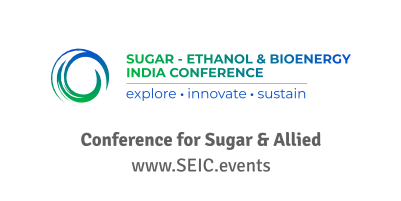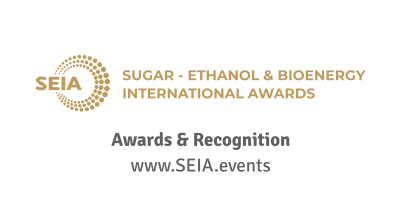In the face of climate change and the urgent need to reduce greenhouse gas emissions, scientists and researchers are constantly seeking innovative solutions to address our carbon dioxide (CO2) problem. One such groundbreaking approach has recently emerged: the conversion of CO2 into ethanol using photothermal materials. This fascinating technology not only offers a way to reduce atmospheric CO2 levels but also provides a sustainable method for producing a valuable fuel and chemical feedstock. In this article, we’ll dive deep into this cutting-edge research, explore its implications, and compare it to other CO2 reduction methods.
The Challenge of CO2 Emissions:
Before we delve into the specifics of this new technology, it’s essential to understand the context. CO2 emissions from human activities, primarily the burning of fossil fuels, have led to a rapid increase in atmospheric CO2 concentrations. This rise is the primary driver of global warming and climate change. Finding ways to capture and utilize CO2 is crucial for mitigating these effects and transitioning to a more sustainable energy future.
Enter Photothermal CO2 Conversion:
Researchers have developed a novel approach to convert CO2 into ethanol using photothermal materials, specifically a Cu/Cu2Se-Cu2O heterojunction-nanosheet array. This method is groundbreaking for several reasons:
- Solar-Powered: The process harnesses the power of sunlight, eliminating the need for external heating and reducing energy costs and emissions associated with traditional conversion methods.
- Efficient Design: The Z-scheme Cu2Se-Cu2O heterostructure spatially separates the sites for CO2 reduction and water oxidation, optimizing the reaction process.
- Enhanced Intermediate Concentration: Microreactors induced by Cu2Se nanosheets improve the local concentration of key intermediates (CH3* and CO*), promoting C-C coupling and ultimately leading to ethanol formation.
How It Works:
The heart of this technology lies in the carefully designed Cu/Cu2Se-Cu2O heterojunction-nanosheet array. Here’s a breakdown of the process:
- Light Absorption: The Cu2Se nanosheets absorb sunlight, generating a photothermal effect that raises the system temperature to around 200°C.
- Electron-Hole Pair Generation: The absorbed light energy creates electron-hole pairs in the semiconductor materials.
- Charge Separation: The Z-scheme structure of the Cu2Se-Cu2O heterostructure allows for efficient separation of charges, with electrons moving to the CO2 reduction sites and holes to the water oxidation sites.
- CO2 Reduction: At the reduction sites, CO2 molecules are converted into intermediates like CO* and CH3*.
- C-C Coupling: The microreactors formed by the nanosheet structure promote the coupling of these intermediates, leading to the formation of ethanol.
- Water Oxidation: Simultaneously, water molecules are oxidized at separate sites, providing the necessary protons and electrons for the overall reaction.
Impressive Results:
The researchers achieved remarkable results with this system:
- Ethanol Generation Rate: 149.45 μmol g−1 h−1
- Electron Selectivity: 48.75%
- Apparent Quantum Yield: 0.286%
These numbers represent a significant step forward in the field of CO2 conversion, demonstrating the potential of photothermal catalysis for producing multi-carbon chemicals using solar energy.
Implications and Potential Applications:
The implications of this research are far-reaching and exciting:
- Sustainable Fuel Production: Ethanol is a valuable biofuel that can be used in various applications, from transportation to industrial processes. Producing it from CO2 offers a carbon-neutral or even carbon-negative fuel source.
- Chemical Feedstock: Ethanol is also an important chemical feedstock used in the production of plastics, solvents, and other materials. This technology could provide a more sustainable source for these industries.
- Carbon Capture and Utilization: By converting CO2 into useful products, this approach addresses both the need to reduce atmospheric CO2 levels and the demand for sustainable chemical production.
- Renewable Energy Integration: The solar-powered nature of this technology aligns well with the growing shift towards renewable energy sources, potentially allowing for integration with existing solar infrastructure.
- Decentralized Production: The ability to produce ethanol using sunlight and CO2 could enable more localized, decentralized fuel and chemical production, reducing transportation costs and emissions.
Comparing Photothermal CO2 Reduction to Other Methods:
To fully appreciate the significance of this breakthrough, it’s helpful to compare it with other common CO2 reduction approaches:
- Electrochemical Reduction (Electrolysis):
- Uses electric current to drive CO2 reduction in an electrolyte solution.
- Can produce various products like formate, methane, and ethylene.
- Requires external electricity input.
- Challenges include electrode stability and scalability. Comparison: While electrochemical reduction is versatile, the photothermal method’s use of solar energy gives it an edge in terms of sustainability and potential cost-effectiveness.
2. Photocatalytic Reduction:
- Uses light-activated catalysts to drive CO2 reduction.
- Often employs semiconductor materials like TiO2 or CdS.
- Faces challenges with efficiency and product selectivity. Comparison: The photothermal method shares similarities with photocatalytic reduction but appears to offer better selectivity towards ethanol production and higher efficiency due to its unique nanostructure design.
3. Thermal Reduction:
- Involves high-temperature reactions, often using hydrogen as a reactant.
- Energy-intensive and often relies on fossil fuels. Comparison: The photothermal method achieves high temperatures using solar energy, making it significantly more sustainable than traditional thermal reduction techniques.
4. Biological CO2 Fixation:
- Uses microorganisms like algae or bacteria to convert CO2 into biomass or biofuels.
- Environmentally friendly but limited by efficiency and scalability. Comparison: While biological methods are promising, the photothermal approach offers potentially faster conversion rates and more direct production of ethanol.
5. Direct Air Capture (DAC):
- Captures CO2 directly from ambient air using sorbents or solvents.
- Energy-intensive and requires subsequent utilization or sequestration. Comparison: DAC focuses on CO2 capture, while the photothermal method combines capture with conversion, offering a more integrated solution.
6. Hydrogenation Reactions:
- Uses metal catalysts to hydrogenate CO2 into products like formic acid or methanol.
- Requires a steady supply of hydrogen. Comparison: The photothermal method doesn’t require external hydrogen input, simplifying the process and potentially reducing costs.
Challenges and Future Directions:
While the photothermal CO2 conversion method shows great promise, several challenges need to be addressed as researchers work towards scaling up the technology:
- Heat Management: Ensuring efficient and uniform heat transfer across larger reactor systems will be crucial. Engineers will need to develop innovative heat management solutions to maintain optimal reaction temperatures while minimizing energy losses.
- Material Durability: The long-term stability of the Cu/Cu2Se-Cu2O nanosheet arrays under real-world conditions needs to be thoroughly investigated. Developing more robust materials or protective coatings may be necessary for commercial applications.
- Scalability of Nanosheet Arrays: Fabricating large-area nanosheet arrays with consistent properties presents a significant challenge. Researchers will need to develop scalable synthesis methods that maintain the unique nanostructure responsible for the system’s high performance.
- Reactant and Product Separation: Efficiently separating CO2 and ethanol in a large-scale system will be critical. This may involve developing selective membranes or other separation techniques, as well as strategies to prevent ethanol evaporation during the high-temperature process.
- Energy Balance: While the system uses solar energy, a comprehensive analysis of the overall energy efficiency is necessary. This includes considering factors like the energy required for CO2 capture and product purification.
- Economic Viability: For commercial adoption, the cost of ethanol production using this method must be competitive with existing production methods. This will require optimizing material costs, improving conversion efficiencies, and potentially integrating the technology with existing infrastructure.
- Integration with CO2 Capture Systems: To maximize the impact of this technology, it will need to be integrated with efficient CO2 capture systems, whether from point sources like industrial emissions or directly from the atmosphere.
Future research directions may include:
- Exploring other photothermal materials to further improve efficiency and selectivity.
- Investigating the production of other valuable multi-carbon chemicals using similar principles.
- Developing hybrid systems that combine photothermal CO2 conversion with other renewable energy technologies.
- Optimizing reactor designs for large-scale implementation.
- Conducting life cycle assessments to quantify the overall environmental impact of the technology.
Conclusion:
The development of photothermal CO2 conversion to ethanol represents a significant breakthrough in our quest for sustainable energy solutions. By harnessing the power of sunlight to transform a greenhouse gas into a valuable fuel and chemical feedstock, this technology offers a promising pathway for addressing climate change while meeting our energy needs.
As we’ve seen, this approach offers several advantages over other CO2 reduction methods, including its solar-powered nature, high selectivity towards ethanol production, and potential for integration with existing renewable energy infrastructure. However, challenges remain in scaling up the technology and ensuring its economic viability.
The success of this research underscores the importance of continued investment in innovative clean energy technologies. As we work towards a more sustainable future, approaches like photothermal CO2 conversion will play a crucial role in reshaping our energy landscape and mitigating the impacts of climate change.
While there is still much work to be done before this technology can be implemented on a large scale, the potential benefits are enormous. From reducing atmospheric CO2 levels to providing a sustainable source of ethanol for fuel and chemical production, photothermal CO2 conversion represents a significant step forward in our journey towards a cleaner, more sustainable world.
As researchers continue to refine and develop this technology, we can look forward to a future where the sun not only powers our homes and businesses but also helps us turn one of our biggest environmental challenges – excess CO2 – into a valuable resource. This is the kind of innovative thinking and scientific progress that gives us hope for a brighter, cleaner future for generations to come.
Disclaimer: The views and opinions expressed in the article by Dilip Patil, Managing Director of Samarth SSK Ltd., are solely his own.














